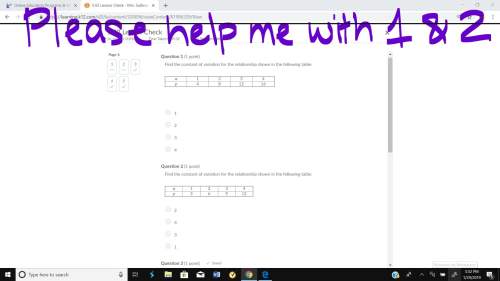
Mathematics, 05.05.2020 05:14 MyaMya12
EXAMPLE 5 Express 1/(1 − x)2 as a power series by differentiating the equation below. What is the radius of convergence? 1 1 − x = 1 + x + x2 + x3 + = [infinity] xn n = 0 |x| < 1 SOLUTION Differentiating each side of the equation, we get 1 (1 − x)2 = 1 + Correct: Your answer is correct. + 3x2 + = [infinity] n = 1 . If we wish, we can replace n by n + 1 and write the answer as 1 (1 − x)2 = [infinity] n = 0 . According to this theorem, the radius of convergence of the differentiated series is the same as the radius of convergence of the original series, namely, R = .

Answers: 3


Another question on Mathematics


Mathematics, 21.06.2019 19:00
The weight of an object in the water is 7% of its weight out of the water. what is the weight of a 652g object in the water?
Answers: 1


Mathematics, 21.06.2019 23:00
Could someone me with this question i’ve been stuck on it for 20 minutes
Answers: 1
You know the right answer?
EXAMPLE 5 Express 1/(1 − x)2 as a power series by differentiating the equation below. What is the ra...
Questions

Social Studies, 29.08.2020 05:01







Mathematics, 29.08.2020 05:01





English, 29.08.2020 05:01




Mathematics, 29.08.2020 05:01



English, 29.08.2020 05:01




